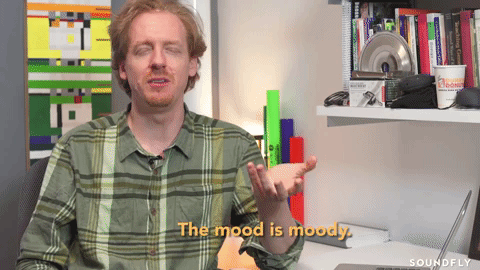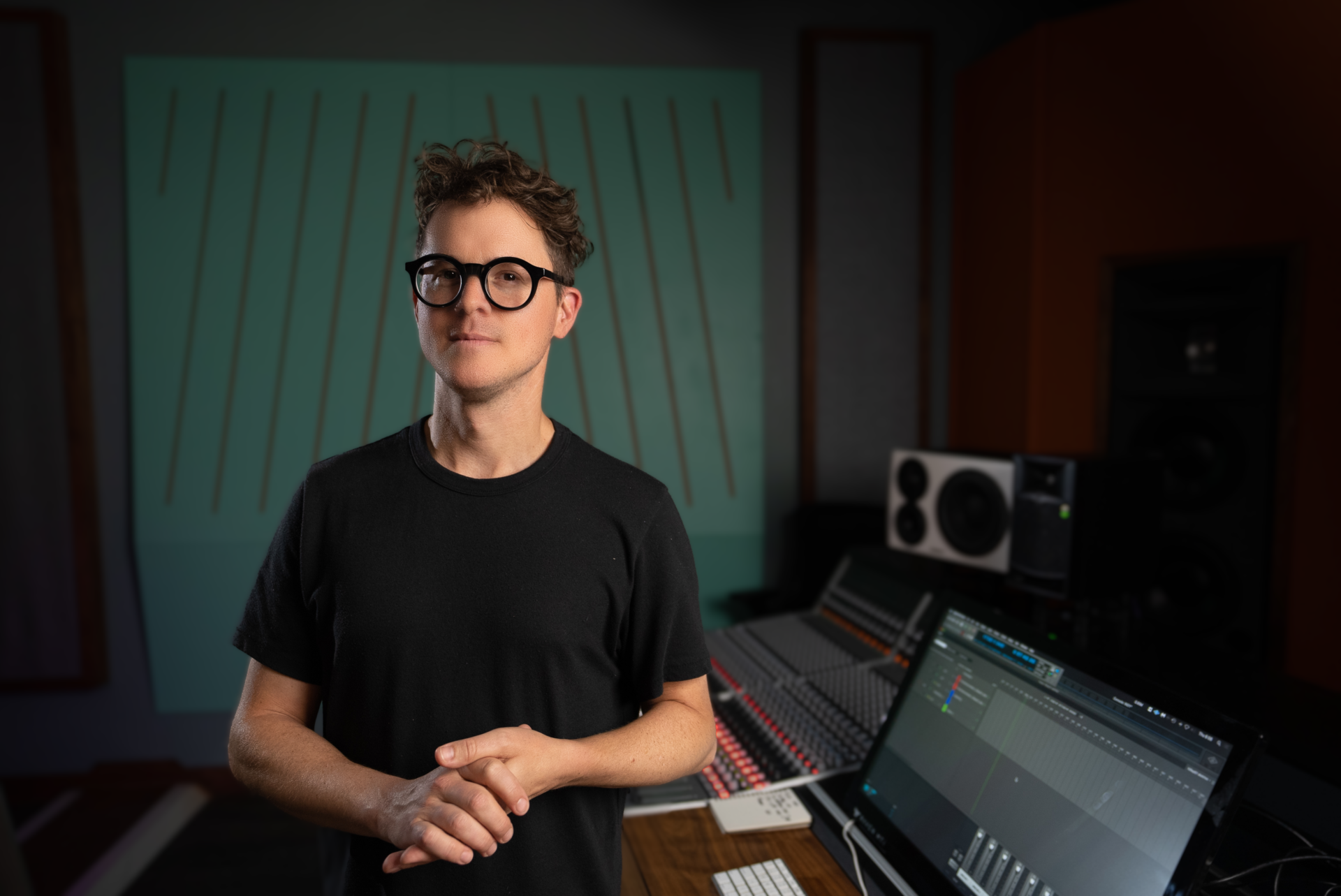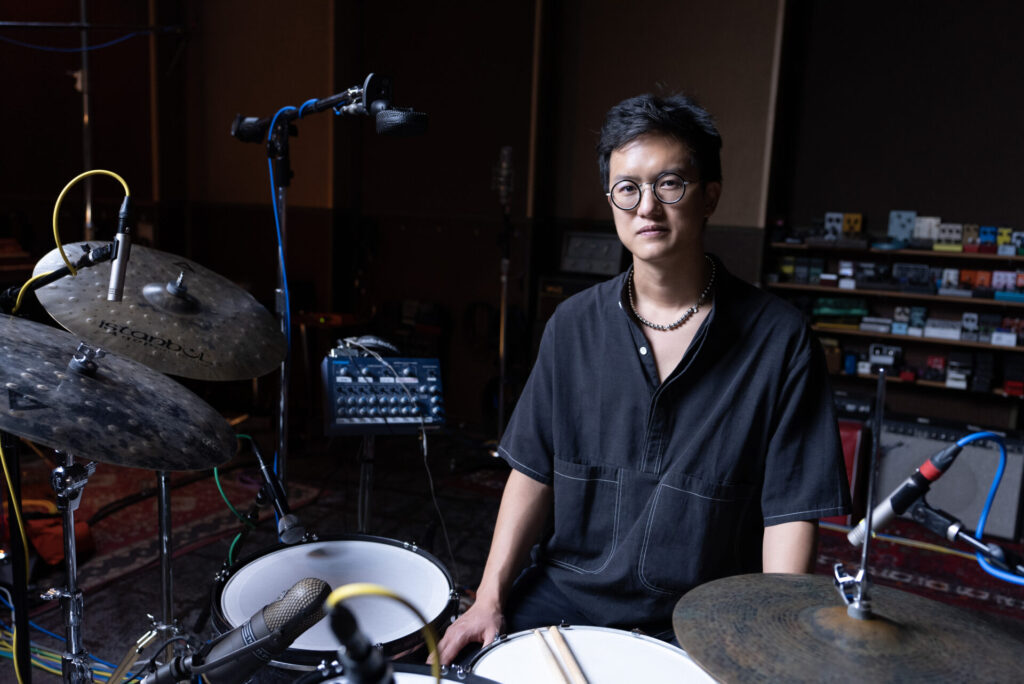+ Learn to craft more compelling beats and warped, broken rhythms with Son Lux’s Ian Chang. His innovative course is out now on Soundfly.
The American experimental pop act Son Lux originated in 2008, first as a solo project from founding member Ryan Lott, and which later grew into a three-piece band when Rafiq Bhatia and Ian Chang joined in 2015. This project is known for creating infectious, cinematic pop music using outside-the-box musical thinking and self-driven production ingenuity.
In this article, we will look at three elements that make their songs sound so joyously unique, with examples culled from their breakout 2013 album, Lanterns.
And if that excites you, Soundfly has not one, but two courses out with members of the band Son Lux. Check out bandleader and singer-composer Ryan Lott’s course Designing Virtual Instruments on his singular approach to building new hybrid electronic instruments and synths out of raw, sampled source audio; and drummer/producer Ian Chang’s course Warped Rhythms & Abstract Beats, on how to build emotive, compelling tapestries of sound with broken and irregular drums.
1. Anti-conventional Song Structures
Most pop music is reliant on the song form. And while forms can take many shapes, in pop music they tend to flow mainly from the common forms of written text in poetry; so, stanzas (verses) and couplets (rhyme schemes), with repetition peppered in (chorus/hook) to reiterate the most important themes.
As a result of this, instrumental accompaniment usually acts as the foundation on which lyrics are sung — a steady support to the creativity of the vocals.
The balance between density of the arrangement, the instruments’ range, how much harmonic support or contrast they provide, etc., all contribute to the final arrangement. As many songwriters would agree, any good arrangement is functional to support the main element of the song, which are the lyrics.
Yet recently in many forms of music, the reliance on computers and audio production software has shaped a diversion from the usual “band” setup, where instrumentalists would often record parts that would be as long as the main track. DAWs provide a quicker way to navigate the song form as a grid, and one which is easily malleable. Digital recording offers the freedom to quickly jump in any part of the song structure and make fast changes to both the arrangement and the sound.
This has helped shake the forms in which pop songs were usually arranged until the 2000s. Think about the off-kilter structures of Björk, Billie Eilish, or Jacob Collier, for example — and Son Lux’s Ryan Lott is right up there with them. These artists take a “producer-centric” approach to composition and song arrangement, which defies the conventions of the “singer-led” pop music we’ve become so accustomed to hearing.
Son Lux’s song, “Easy,” consists mostly of a single vocal line repeated throughout. Structurally, this could mean that either everything is verse material or that everything is chorus material. The song form here is lost from the very beginning, in favour of a minimalistic, repetitive, mood-based approach.
At some topical points, the main melodic line is extended by short textual fragments, and in many cases the syllable count isn’t even or aligned, such as in this passage:
“Oh, easy, easy
Throw the lunch you pay for
Out of sight when it’s
Easy, oh easy
Throw the lunch you pay for
Oh easy, easy.”
In a way, these digressions are subtle and to many, unnoticeable. But the use a repetitive mantra creates an unmistakable mood, which is actually the main driver of message in this track.

And this is kind of where things become interesting for me. Typically, song structures that favor verses, choruses, and bridges — as their main building blocks — are determined by the presence and location of the hook. Those other elements serve to deliver us to the hook, and create identifiable contrast or dynamics. In the case of “Easy” however, the repetition of the main element and its elongation/truncation flips this upside down.
We can notice a similar approach in the song “Enough Of Our Machines,” where a single melodic line is the main element, or character, in the song structure.
This line — similar to what’s happening in “Easy” — is elongated and answered by instrumental interventions and doubling, in a beautiful minimal backdrop of piano and synths.
In the last moments of the song, an unexpected development of this material is presented in a new key, a coda. Additionally, there is a shift in the person who is addressed in the lyrics. Throughout the whole first part the lyrics are:
“I’ve had enough of our machines.
I’m giving up and I am letting down”
Whereas in the last section, the focus shifts to a hypothetical addressee:
“I’m asking you to take.”
Normally, this wouldn’t be that stark a contrast but it accompanies a transposition in melody, and the addition of extra notes toward a new harmonic dimension. Again, a subtle change, but one that carries immense expressive power. This brings me to the next point.

2. Unique Treatment of Expression Elements
Compared to lots of Top 40 pop, the vocals on this album may seem limited in scope and variety, yet a focus on their timbre might help us appreciate the expressive richness and depth they contain.
These lead vocals are constantly doubled with filtered, heavily manipulated overdubs, and interspersed with countermelodies played on synthesizers. This makes some of the vocals sound robotic, which in contrast makes the naked lines sound even more “human.”
By using pitch shifting (as opposed to octave or harmony doubling), this trick keeps a listener continually interested and engaged; working in tandem with the elongation and truncation of the lyrics that I mentioned earlier on.
In their song, “Plan The Escape” (among others throughout the entire album), heavily manipulated vocal elements are also used as background vocals and interventions, creating an interesting liminal space between vocals and production elements (where does one end and the other begin?).
This practice, though, is not solely limited to vocals, but extended to all the elements that form the arrangement. Again, these elements may all be constructed from the same instrument (guitar, synths, or drums), yet they don’t feel like a development of a single instrumental role, as in most rock or pop music. Rather, each instrument and element plays a timbral, textural role, providing structure almost by consequence.
Again, I think this represents a producer’s, or engineer’s, way of thinking about music as a sonic landscape — as opposed to a songwriter’s or arranger’s.
Like in a lot of electronic music, the placement of the elements in the mix and their sonic attributes is what gives the music its mood and character. The placement and/or movement of these sound objects in the stereo field can create and release tension; a role many think is only reserved for harmony.
The elements in an arrangement, as well as a mix, are sometimes linked by their similarity in timbre and sometimes by their contrast. Thus, timbre is one of the main elements that hold together the arrangement in Son Lux’s music, imparting remarkable sonic uniqueness. Another is rhythm…

3. A Unique Use of Rhythmic Elements
Going back to “Easy,” this song’s use of rhythm also makes it stand out; because the rhythmic backdrop here can be perceived as layers which are often added or subtracted.
Consider the saxophone part that appears at 0:59. The main rhythmic elements (kick, claps, synth ostinato, and synth chords) are very much grounded on the 2nd and 4th beats, establishing square, even subdivisions. The claps and synth ostinato are un-quantized but they still retain that feeling of being a regular 4/4.
The sax phrases, though, superimpose another rhythmic layer that works against the implied straight 4/4 rhythm. They are polyrhythmic; and this makes the beat groove and adds another layer of rhythmic interest.
The other way Son Lux use rhythm in an interesting way is how they space elements out from one another. In effect, this boils down to using silence as an instrument unto itself.
Sometimes this is structural — as in, silence used to create suspense or link different elements in the arrangement — like in the rhythm arrangement of “Lost It To Trying.” Other times, silence is used to spotlight the entrance of an element within the sonic landscape.
In some ways, Son Lux’s aesthetics, in terms of arrangement, are very minimalistic. They have the ability to use even the “lack” of elements to imbue their music with a unique characteristic. Inarguably, their music sounds modern, contemporary, and boundary-pushing.
Don’t stop here!
Continue learning with hundreds of lessons on songwriting, mixing, recording and production, composing, beat making, and more on Soundfly, with artist-led courses by Kimbra, Com Truise, Jlin, Kiefer, and the new Ryan Lott: Designing Sample-Based Instruments.




